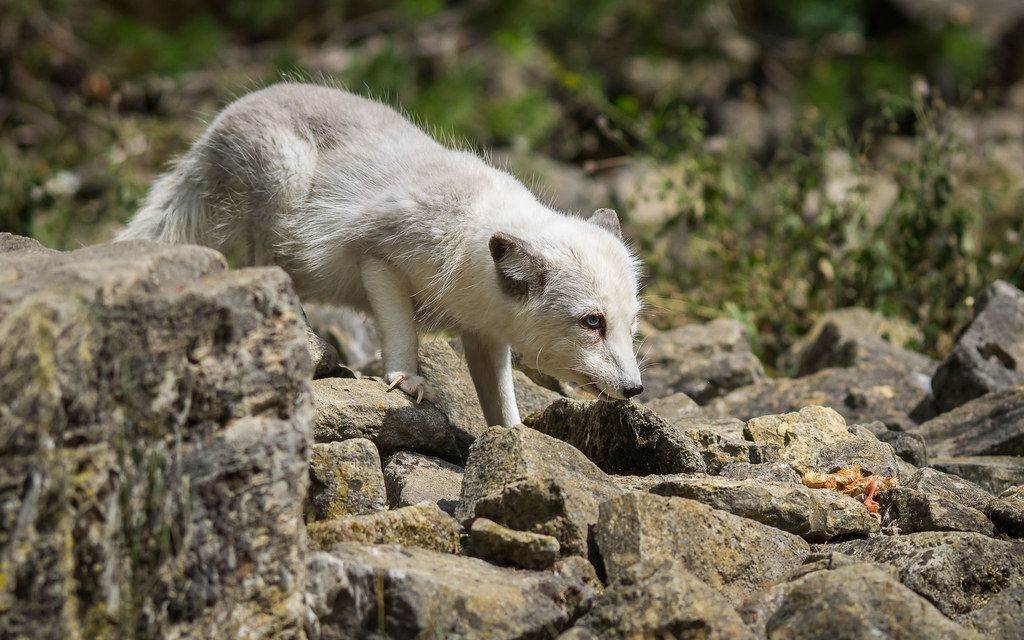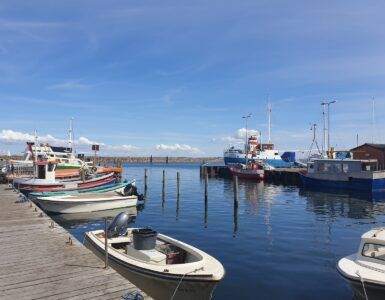Iceland, a mesmerizing land of fire and ice, is renowned for its diverse landscapes encompassing glaciers, waterfalls, geysers, and lava fields. However, Iceland isn’t just home to breathtaking natural scenery; it’s also a haven for a variety of unique wildlife species. From adorable puffins and majestic whales to the elusive Arctic fox, this guide will take you on a journey introducing you to Iceland’s fascinating creatures and the best places to observe them in the wild.
“The mesmerizing beauty of Iceland’s landscapes is only rivaled by the diversity of its wildlife, a subtle dance of strength and adaptation in the midst of an elemental clash.”
Table of Contents
Puffins
These charming little birds, easily recognized by their colorful beaks and striking black and white plumage, can be found nesting along Iceland’s cliffs during the breeding season, typically from May to August. The Westman Islands, Látrabjarg cliffs in the Westfjords, and Dyrhólaey Peninsula are popular puffin-watching spots. Remember to respect their habitat by maintaining a safe distance and avoiding loud noises.

Iceland boasts one of the world’s largest Atlantic puffin colonies, with an estimated population of 8 to 10 million birds. Renowned for their adorable appearance, these colorful seabirds sport a distinct black and white plumage, large round head, and a vibrant, orange-tinted beak. Puffins typically breed in large colonies along the Icelandic coast, burrowing deep into the cliffside during the breeding season (usually from May to August) to create their nests.
To make the most out of your puffin-watching experience, consider these top-rated locations:
The Westman Islands (Vestmannaeyjar)
Located just off Iceland’s south coast, the Westman Islands host large colonies of puffins during the breeding season, making it one of Iceland’s premier puffin-watching spots. Heimaey, the largest of the islands, is home to approximately one million puffins. Guided tours are available, providing an educational and enriching experience.

Látrabjarg Cliffs
The westernmost point of Iceland, Látrabjarg Cliffs, serves as a nesting site for millions of seabirds, including puffins. The cliffs stretch nearly 14 kilometers and are among the most accessible puffin-watching locations in Iceland. While puffins tend to nest closer to the edge, remember to keep a safe distance from the cliffside and never risk your safety for a closer view.
Dyrhólaey Peninsula
Situated close to the picturesque village of Vík on the south coast, the Dyrhólaey Peninsula is another popular spot to observe puffins in their natural habitat. The area features a rocky promontory with vibrant meadows where puffins are known to nest. Visitors can explore the site on their own, but guided tours are also available, offering detailed insights into puffin behavior and the area’s ecology.
“Iceland boasts one of the world’s largest Atlantic puffin colonies, with an estimated population of 8 to 10 million birds. Renowned for their adorable appearance, these colorful seabirds truly capture the hearts of birdwatchers and wildlife enthusiasts alike.”
Whales
Iceland is one of the world’s premier destinations for whale watching, thanks to its nutrient-rich waters supporting a diverse marine ecosystem. Among the 23 whale species that inhabit these waters, you may spot humpback whales, minke whales, orcas, and even the giant blue whale. Prime whale-watching season runs from April to October, and popular departure points include Reykjavik, Húsavík, and Akureyri.

Prime whale-watching season typically runs from April to October, before many species migrate to warmer waters. Whale watching tours typically depart from several popular locations, each offering distinct experiences:
Reykjavik
As the capital city and main tourist hub, Reykjavik provides a convenient starting point for whale watching excursions. Visitors have the chance to spot humpback whales, minke whales, and dolphins in Faxaflói Bay while enjoying views of the stunning coastline.
“From the acrobatic humpback to the intelligent and social orca, Iceland’s diverse marine ecosystem is home to an array of remarkable cetaceans, providing a spectacular spectacle for visitors to the shores of this breathtaking island.”
Húsavík
Often called the “Whale Watching Capital of Iceland,” Húsavík is renowned for its impressive success rate in whale sightings. Multiple species can often be seen in Skjálfandi Bay, surrounded by picturesque scenery.
Whale watching tours from Húsavík
Akureyri
Located in North Iceland’s stunning Eyjafjörður fjord, Akureyri offers visitors the opportunity to embark on whale watching tours in a beautiful and serene setting.

When participating in whale watching tours, always remember to respect the animals and their natural behavior, adhering to guidelines provided by your tour operator. Patience is key when observing whales, and the reward lies in witnessing these majestic creatures thriving in their natural environment. By promoting responsible whale watching and marine conservation, we can contribute to the protection and preservation of these remarkable species for future generations.
Arctic Foxes (Ísaldistibur)
As Iceland’s only native land mammal, the Arctic fox plays a unique role in the Icelandic ecosystem. These elusive animals can be spotted year-round in various parts of the island, but the best location for observing them is the Hornstrandir Nature Reserve in the Westfjords. Their fur color changes seasonally, allowing them to blend in with their surroundings, making them a rewarding sight for lucky travelers who catch a glimpse.

The Arctic fox holds a unique and special place in Iceland’s wildlife spectrum, as it is the country’s only native land mammal. Having arrived in Iceland during the last Ice Age, these captivating creatures have adapted exceptionally well to the harsh and diverse conditions of the island.
“With a remarkable coat that transitions from winter white to summer brown or grey-blue, Arctic foxes showcase the astonishing adaptability of nature as they blend seamlessly with their surroundings.”
Arctic foxes possess a distinctive coat that changes color according to the season. In winter, they sport a thick and luxurious white fur that serves as excellent camouflage against the snow-laden landscape. During the summer months, their coat transitions to a thinner, brown or grey-blue shade, allowing them to blend seamlessly with the thawing environment.

Encounters with Arctic foxes are rare due to their elusive nature and ability to camouflage in their surroundings. To increase your chances of sighting these endearing animals, consider joining a guided tour to Hornstrandir or enlisting the help of local experts, who can help you track them while sharing valuable knowledge about their behavior and habitats.
Seals
Seals are a common sight in Iceland, with harbor seals and grey seals being the most frequently observed species. The Vatnsnes Peninsula, home to one of Iceland’s largest seal colonies, offers visitors the chance to view seals basking on the rocky shores. Ytri-Tunga beach on the Snæfellsnes Peninsula and Jökulsárlón Glacier Lagoon are also excellent seal watching spots.

Seals hold an integral place within Iceland’s marine ecosystems and have been historically significant for the local population, especially for their cultural and economic values. Two primary species of seals can be found in Iceland: harbor seals (Phoca vitulina) and grey seals (Halichoerus grypus).
Harbor seals are the smaller and more commonly encountered species. Their round heads, large eyes, and spotted coat make them easily recognizable. They can be spotted lounging on rocks or swimming in the waters close to shore. Harbor seal colonies are spread around the island, with specific spots offering great opportunities for seal-watching.
“Iceland’s seals, playing an integral role in the nation’s marine ecosystems, offer visitors a rare glimpse into the enchanting world of these captivating marine mammals.”
Grey seals are larger in size and possess a more elongated snout. Though somewhat shyer than harbor seals, they can still be seen resting on the Icelandic coastline or swimming in coastal waters. Grey seals are more prominent in the Westfjords, the Northwest, and the southeast.
Reindeer
Reindeer were introduced to Iceland in the 18th century and have since established themselves in the Eastfjords region. The optimal time for sightings is during the winter months when the reindeer descend from the mountains in search of food. Take a guided reindeer tour to learn more about these animals and the efforts to sustainably manage their population.

Reindeer are known for their seasonal migrations, which influences their distribution across Iceland. During winter months, they descend from the mountains into lower-lying areas, searching for food and shelter, making this season ideal for sightings. In contrast, in summer, they migrate to higher elevations, grazing on lush vegetation and seeking cooler temperatures.
“Joining a guided reindeer tour offers an immersive experience, as experts share knowledge about the animals’ behavior, habitat, and ongoing initiatives to manage their population sustainably while preserving the island’s natural resources.”
While it is possible to spot reindeer throughout the Eastfjords, joining a guided reindeer tour can enrich the experience by providing valuable knowledge about their population, behavioral patterns, and habitat preferences. Experts will also share information about the various initiatives taken by the Icelandic government and wildlife activists to sustainably manage reindeer populations and prevent overgrazing.

Wrapping up
Iceland’s unique wildlife offers numerous opportunities for nature enthusiasts to engage with its captivating animals while deepening their appreciation for the complex ecosystems that make up this extraordinary island. Equipped with this guide, you can embark on unforgettable wildlife encounters, leaving Iceland with memories that will last a lifetime. Always remember to practice responsible and respectful wildlife-watching ethics to ensure the preservation and thriving of these magnificent creatures.
Last Updated on April 15, 2023







